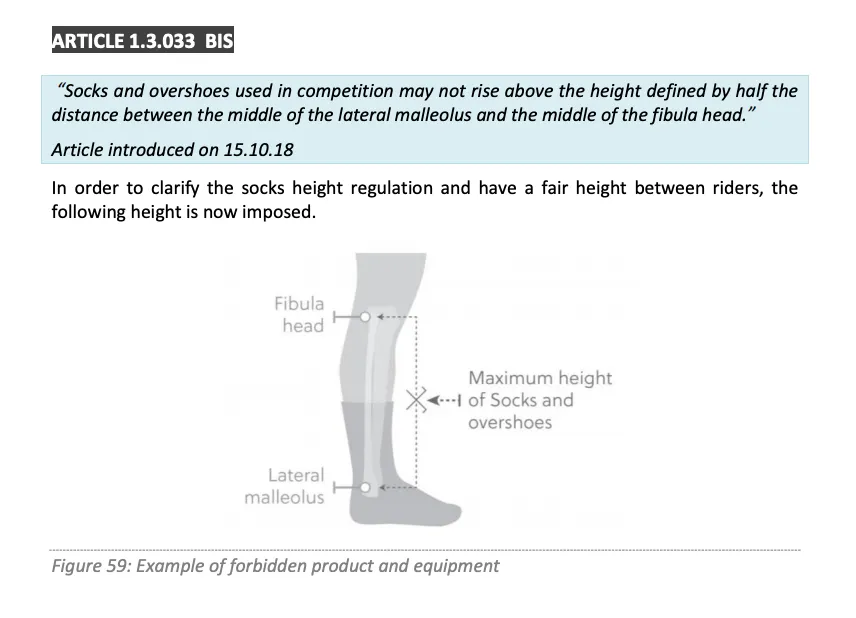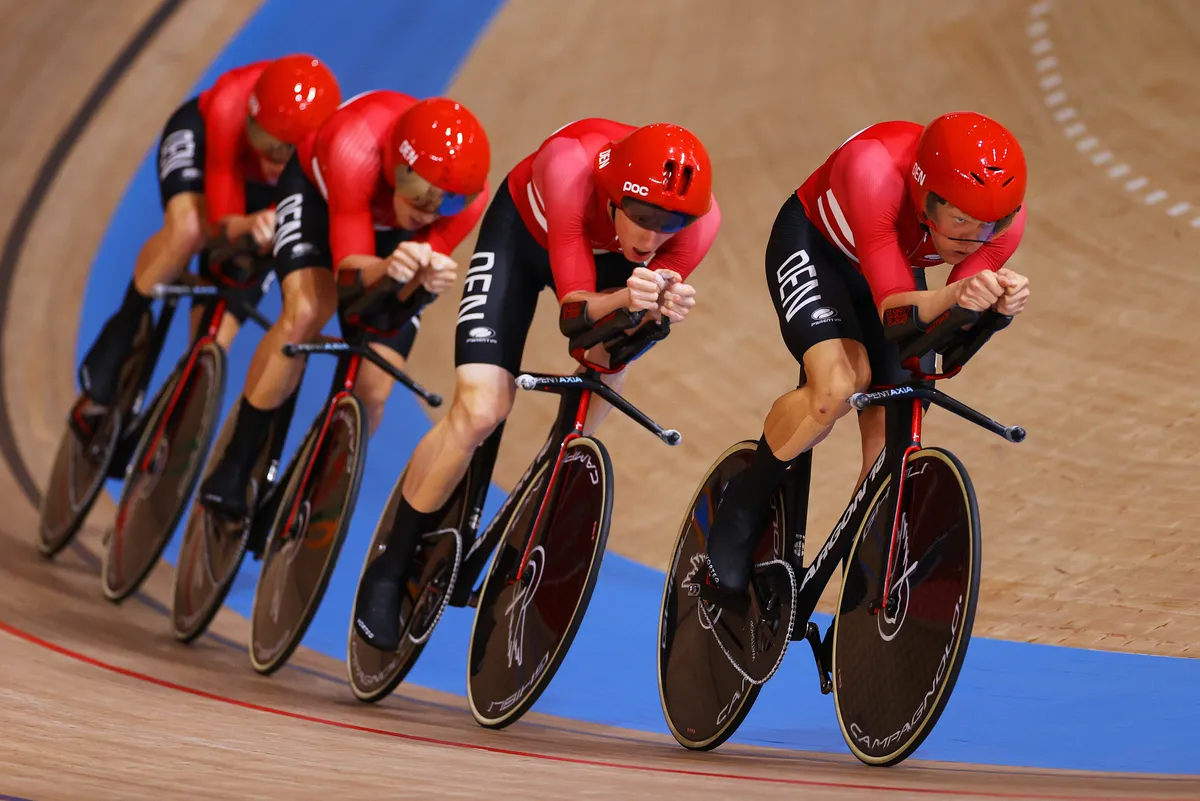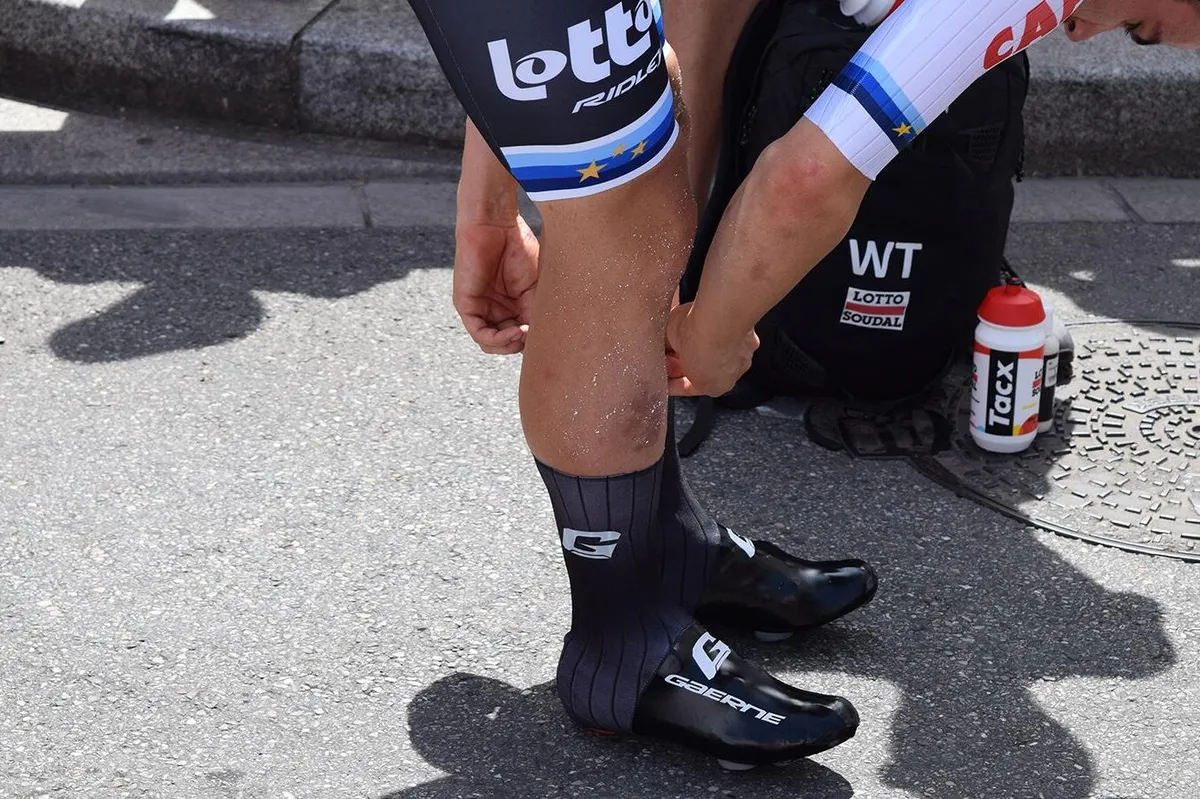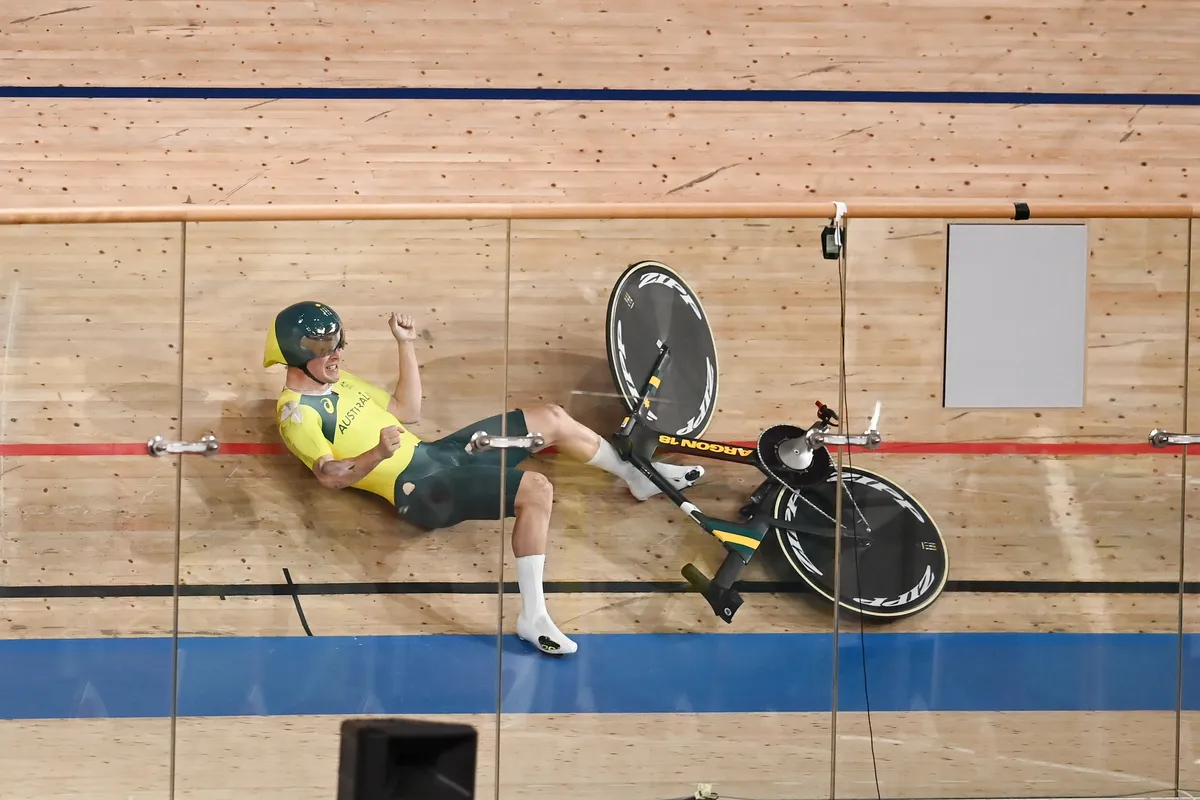The Danish Olympic track cycling squad was spotted using fabric tape on their shins during the Tokyo 2020 men’s team pursuit qualifying, possibly in a bid to circumvent the UCI’s strict rules on sock height and gain a small aerodynamic advantage.
The Danish quartet qualified fastest on the opening day of the Olympic track cycling schedule, posting an Olympic record of 3:45.014 (0.342 seconds shy of their own world record). All four riders – Lasse Norman Hansen, Niklas Larsen, Frederik Madsen and Rasmus Pedersen – were using the tape.
The UCI's controversial 'sock height rule', introduced in October 2018 as part of Article 1.3.033, states: "Socks and overshoes used in competition may not rise above the height defined by half the distance between the middle of the lateral malleolus and the middle of the fibula head."
Looking at data from NoPinz (the brand that produces UCI-legal shoe covers, as well as UCI-illegal ones that extend all the way up the knee), the potential advantage of a knee-length shoe cover could be in the region of two watts over a UCI-legal aero sock – a significant advantage in an event that can be decided by milliseconds.
Speaking to BikeRadar, aero expert Dr Xavier Disley confirmed it wouldn’t be unreasonable to expect a saving in this region, by using tape to mimic the aero-enhancing effect of a knee-length sock.

Though such tape is not explicitly banned by the UCI’s technical regulations (riders can often be spotted wearing kinesiology tape, for example), Article 1.3.033 continues: “Any non-essential element or device, of which the purpose is not exclusively that of clothing or protection, is forbidden.”
Perhaps crucially, the rule says: “This shall also apply regarding any material or substance applied onto the skin or clothing and which is not itself an item of clothing.”

If that’s the case, then why was the Danish team allowed to take to the start line with the tape in place? Did the trackside commissaires simply miss it?
It’s entirely possible someone beady-eyed at the UCI will soon be on the phone to its representatives at the Tokyo Games, to issue a diktat clarifying the rules. (Update: According to a tweet from Chris Boardman, the 1992 individual pursuit Olympic champion believes the Danish team approved the use of tape with the UCI).
After all, this wouldn’t be the first time the UCI has moved quickly to ban aero-improving ‘body modifications’. Back in 2018, Lotto-Soudal was forbidden from applying ‘speed gel’ to their riders' legs – a sticky solution that included microbeads that purportedly reduced aerodynamic drag.

Or perhaps the Danish team (who have been working with engineer-turned-cycling-aero-innovator Dan Bigham) have just been very clever and found a legitimate loophole to exploit. Watch this space.

The Danish team will now face Great Britain, who finished fourth in qualifying, in Tuesday's heats, while Italy and New Zealand, second and third fastest respectively, will go head-to-head. The winners of those heats will ride for gold on Wednesday.
The bottom four teams from qualifying (Australia – 5th, Canada – 6th, Germany – 7th, and Switzerland – 8th) will also be seeded against each other. The two fastest teams not to reach the gold-medal final will contest the bronze-medal final.
In the women's event, Germany set a new world record by nearly three seconds in qualifying, posting a time of 4:07.307 to go fastest. Great Britain finished second-fastest in 4:09:022 – also an improvement on the world record of 4:10.236 they set at Rio 2016.
Germany will now ride against Italy in Tuesday's heats, with Great Britain facing the United States. Once again, the two winners will progress to the gold medal race.
The women's medal rides also take place on Tuesday, with France, New Zealand, Australia and Canada – finishing from fifth to eighth in qualifying – still in contention for bronze.
